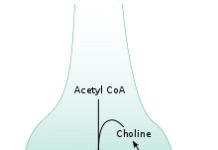Heavy metal poisoning is caused by the accumulation of certain metals in the body due to exposure through food, water, industrial chemicals, or other sources.
While your body needs small amounts of some heavy metals to function normally — such as zinc, copper, chromium, iron, and manganese — toxic amounts are harmful.
If your body's soft tissues accumulate too much of these substances, the resulting poisoning can cause serious health problems.
Causes and Risk Factors of Heavy Metal Poisoning
Heavy metal poisoning can be caused by:
- Industrial exposure
- Air or water pollution
- Foods
- Medicines
- Improperly coated food containers, plates, and cookware
- Ingestion of lead-based paints
- Ingestion of insecticides, herbicides, and pesticides
How Is Heavy Metal Poisoning Diagnosed?
- Complete blood count with blood smear
- Kidney function tests
- Urine test
- Liver function test
- Electrocardiogram (EKG)
- Lead
- Mercury
- Arsenic
- Cadmium
- Chromium
Prognosis of Heavy Metal Poisoning
If the diagnosis of heavy metal poisoning is made before permanent damage is suspected, the prognosis is good.
Treatment and Medication Options for Heavy Metal Poisoning
When it comes to treating heavy metal poisoning, the first step is to reduce exposure to the substance.
If you experience acute poisoning, you will most likely be treated with chelating agents, which bind to the metal and are then excreted in your urine. They come in pill and injection form.
Some commonly used chelating agent drugs are:
- Dimercaprol
- Calcium disodium EDTA
- Penicillamine
Other forms of treatment may include:
- Pumping of the stomach to remove ingested metals
- Activated charcoal, administered orally
- Hemodialysis, or other special treatments if kidney failure occurs
- Fluids administered intravenously (through an IV)


Activated Charcoal 101: Functions, Benefits, Risks, Where to Buy
Prevention of Heavy Metal Poisoning
The following tips may help you prevent heavy metal poisoning:
- Wear masks and protective clothing if you work around heavy metals.
- Since many metals accumulate in dust and dirt, keep these out of your home as much as possible (remove shoes before entering the house).
- Pay attention to local fish advisories regarding mercury levels.
- Be aware of potential sources of lead exposure.
- Check for any heavy metals listed on the labels of products you bring into your home.
RELATED: Eat the Right Fish for Heart Health
Research and Statistics: Who Has Heavy Metal Poisoning?
Related Conditions and Causes of Heavy Metal Poisoning
The following disorders may be associated with heavy metal poisoning:
- Metal Fume Fever This condition is caused by exposure to the fume of certain metals — for example, when galvanized steel is welded in an area that isn’t properly ventilated.
- Fanconi’s Anemia This blood disorder can be acquired through acute lead poisoning.
- Wilson’s Disease With this inherited disorder, excess copper builds up in the body and accumulates in your organs.
Resources We Love
Environmental Working Group
Founded in 1992, the group educates the public on the ingredients, chemicals, and potential toxins that we interact with on a daily basis. Their consumer guides offer quick and clear guidance on everything from tap water to mercury levels in seafood.
Environmental Protection Agency (EPA)
The United States EPA has a wealth of information on various heavy metals and their effects on health.
With additional reporting by Abbi Libers and Carlene Bauer.
Editorial Sources and Fact-Checking
References
- Heavy Metal Poisoning. National Organization for Rare Disorders. 2006.
- Heavy Metals and Your Health: Frequently Asked Questions About Testing, Treatment, and Prevention. Oregon Public Health. May 2016.
- Heavy Metal Poisoning. Genetic and Rare Diseases Center. April 27, 2017.
- Yeter D, Banks Ellen C, Aschner M. Disparity in Risk Factor Severity for Early Childhood Blood Lead Among Predominantly African-American Black Children: The 1999 to 2010 US NHANES. International Journal of Environmental Research and Public Health. March 2020.
- Vahter M, Akesson A, Lidén C, Ceccatelli S, et al. Gender Differences in the Disposition and Toxicity of Metals. Environmental Research. May 2007.
- Percentage of Children Aged 1–5 Years with Elevated Blood Lead Levels, by Race/Ethnicity — National Health and Nutrition Examination Survey, United States, 1988–1994, 1999–2006, and 2007–2014. Centers for Disease Control and Prevention. October 7, 2016.
- Lead Poisoning. Kids Health. March 2019.
Sources
- Rajkumar V, Gupta V. Heavy Metal Toxicity. StatPearls. October 2020.













































